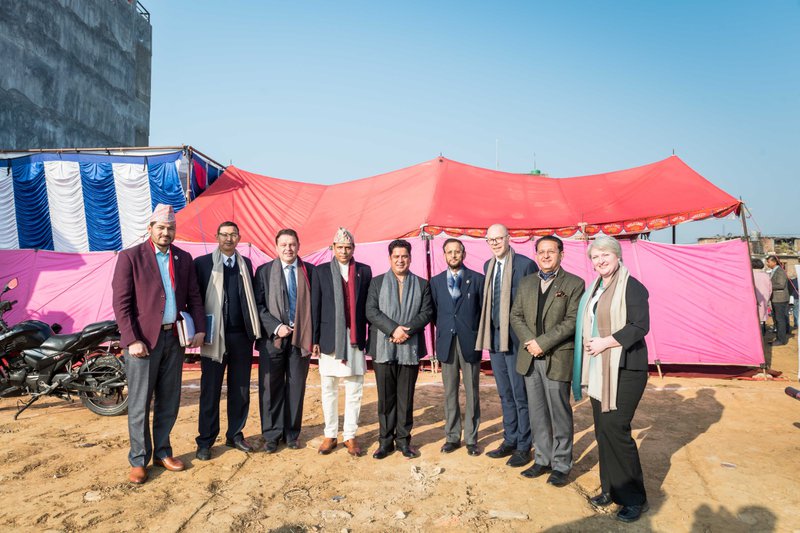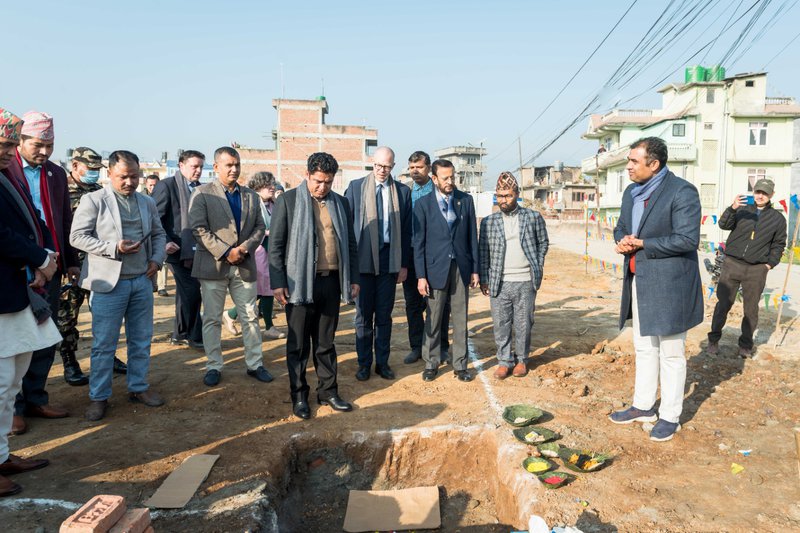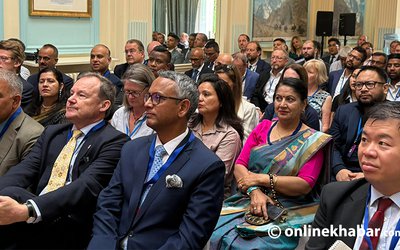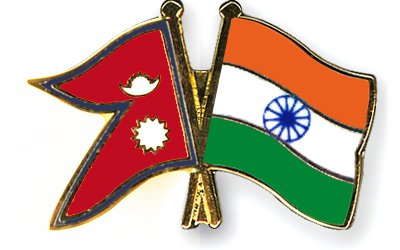
Industry Minister Damodar Bhandari and Director for Middle East , Asia & Pacific Peteris Ustubs and ITC Director and Ashish Shah ITC jointly launched the National Pashmina Sector Export Strategy 2022-2026, a pioneering document for pashmina export amid function.

The Government of Nepal unveiled its ‘National Pashmina Sector Export Strategy 2022-2026', which is expected to augment the supply capacity of Nepal’s private sector and connect its pashmina sector with regional and global markets to increase exports.

The launch of the Strategy comes after several rounds of multi-stakeholder consultations by the Ministry of Industry, Commerce and Supplies (MoICS), in collaboration with the Trade and Export Promotion Centre (TEPC) and the Nepal Pashmina Industries Association (NPIA), as part of the EU-Nepal Trade and Investment Programme (TIP), a project funded by the European Union with technical support from the International Trade Centre (ITC).
The EU-funded project provided technical assistance in designing the Strategy, focusing on quick-win economic and business opportunities for micro, small and medium-sized enterprises along the pashmina value chain. In 2021, Nepal exported pashmina shawls worth Rs 2.53 billion (USD 19.31 million), up by 18% compared to 2020.
The Strategy aims to define opportunities and address the sector's constraints through a detailed Plan of Action to help achieve national prosperity through increased, sustainable exports of chyangra pashmina from Nepal, with a goal of exports worth USD 75 million (Euro 68.7 million) by the end of 2026. The Strategy also includes a coordination and implementation mechanism with clear roles and responsibilities for all concerned stakeholders.
In order to supplement the focus on pashmina export, a foundation stone for the planned Pashmina Fibre Processing Centre was laid in Harishiddi, Lalitpur today. The Centre is expected to establish linkages between chyangra farmers and traders for better market prospects in both the national and international fronts and set the ground for quality fiber production.

"Chyangra pashmina is one of Nepal's most promising exportable low-volume, high-value products. Considering its positive socio-economic impacts on the entire value chain, from the farmers and producers in high mountain districts to exporters, the Government of Nepal has prioritised the value chain development of pashmina."
Damodar Bhandari, Minister for Industry, Commerce and Supplies said that the the Strategy's aim is to pool together lessons learned for a future in which small and medium-sized enterprises can benefit from improved backward linkages and exports. I am confident that this Strategy will help Nepal's pashmina industry to move forward with a clear purpose, promoting linkages between various actors and diversifying its export basket and target markets."
Peteris Ustubs, Director for Middle East, Asia and Pacific, EU Department for International Partnerships said,"the Strategy's vision sets out to achieve authentic quality and sustainability in the Nepali chyangra pashmina sector, deepening socio-economic gains through more competitive exports. However, to realise this, Nepal must first reorganize its pashmina sector and build capacities, improve productivity, and regain the quality reputation that it once enjoyed. In this regard, this Strategy offers common ground, equipped with clear priorities laid down for long-term sector development."
Madhu Kumar Marasini, Secretary, Ministry of Industry, Commerce and Supplies, said,"we should be proud of having designed the Strategy. However, the work does not stop here. The challenge is implementation. If we want the Strategy to improve the lives of the Nepali people, then we must move from words to action. With EU support, ITC is already moving the Strategy towards implementation. For example, we are working together with fibre-processing companies and the Nepal Pashmina Industries Association (NPIA) to create backward linkages and facilitate resource mobilisation and establish market connections to procure proper equipment, ensuring that Nepali high-quality fibre produced in the Himalaya is processed within the country. Subsequently, truly Nepali pashmina products benefitting goat farmers, women weavers, and exporters will be branded and sold in luxury target markets.
Ashish Shah, Director of Country Programs, International Trade Centre said,"this document is a major stride towards reviving the glorious reputation of Himalayan chyangra pashmina for its quality and traditional craftsmanship, and regaining the international market with increased supply. We hope that with these strategic interventions, the livelihood of the pastoralists who largely depend on chyangra farming in the remote high Himalayan regions will greatly benefit. NPIA is extending its reach to the farmers and hopes to get support from all concerned. We are ready to extend our support to the government to implement the Strategy effectively. We want to thank the Government of Nepal’s Ministry of Industry, Commerce, and Supplies for formulating a crucial and action-oriented document. We would also like to thank European Union for financial support and the International Trade Centre (ITC) for technical support. The Strategy has offered a clear roadmap for establishing a robust value chain for Nepali pashmina."
The EU-funded four-year Trade and Investment Programme was launched in February 2020 and assists the Government of Nepal in achieving sustainable and inclusive economic growth and poverty reduction by increasing trade and participation in regional and global value chains. Implemented by the International Trade Centre (ITC), the project also provides assistance to the sustainable and inclusive development of Nepal's coffee and pashmina value chains, with a focus on export development.
- Nepal-UK Tech Forum Held
- Jul 06, 2025
- Hari Sayani or Devshayani Ekadashi 2025: Day Of Tulsi Plantation
- Jul 06, 2025
- Siddhababa Tunnel Makes A Major Milestone
- Jul 06, 2025
- Weather Forecast: Generally Cloudy Across The Country With Heavy Rain At One Or Two Places Gandaki, Bagmati and Koshi Provinces
- Jul 06, 2025
- India’s External Affairs Ministry’s Senior Officials Says Indo-Nepal relations are ever expanding
- Jul 05, 2025















